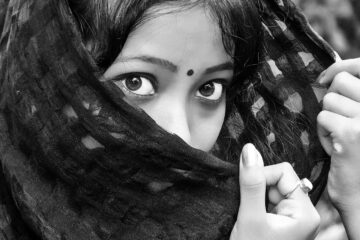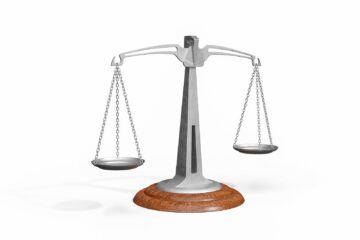![]()
Introduction:
In this article, we will discuss about the validity of the panchayat Raj through the eye of the Indian constitution. And also, about the effect of the constitutional democracy on human rights, if we closely examine this three, we will find that they are interlinked to each other.
Validity of Panchayat Raj in Indian Constitution
“When panchayat raj is established public opinion will do what violence can never do”
-Mahatma Gandhi
The rural self-government which is called as “panchayats” cane into existence by the 73rd amendment of the Indian constitution to establish the concept of democracy at the ground level where the people of rural India can get the benefit.
History of Panchayat Raj System in India
In old Sanskrit language and historical scriptures described “Panchayat” as a group of 5 people with a head of spiritual knowledge In Ancient and Medieval era, panchayat raj was given importance bin different forms. As India village panchayats were mentioned in “Kautilya Arthshastra”. Thus, in ancient India, a local self-elected government existed with its own culture, traditions and rules. During the Medieval period, the Sultan’s in Delhi also divided their territories into provinces called “Vilayat”. It was During the British era when panchayats lost their importance and became weak. Until 1870 when people in India realized the need for local self-government
Post Independence Period
After the establishment of the Constitution of India, Article 40 talked about the concept of panchayats and Article 246 gave power to State governments to constitute and govern the functioning of the local self-government. However, the framer of the constitution himself that is B.R Ambedkar opposed the idea of including the concept of Panchayat in the Constitution after much discussion the panchayat got a place in the Indian constitution under Article 40 of the Indian constitution.
Various committees were formed for the smooth functioning of the panchayats. The main were, Hanumantha Rao Committee,1983 and GVK Rao Committee (1985). The 73rd Amendment of the Constitution of India introduced the concept of local self-government in rural and urban areas of India in December 1992. The 73rd Amendment came into force in 1992 on April 24. Article 243(D) of the Indian constitution described Panchayat as “means an institution (by whatever name called), as self-government constituted under article 234B Article 243E talks about the duration of the panchayat which can be up to five years unless it is sooner dissolved under any law. There is also reservation under the panchayats for women and the people of the scheduled tribe and scheduled castes under article 243D.
The 73rd Amendment also gave the power to the panchayats to establish plans for economic development and social justice. It also gave the power to impose taxes and generate funds.
Although the panchayat system is not applicable to certain areas of India which are:
- States of Nagaland, Meghalaya and Mizoram
- Hill areas of the district of Darjeeling and Manipur.
The panchayat constitutes a three-tier system under Article 243B of village, intermediate and district levels.
Panchayat Raj and Human Rights
The human rights are the rights given to humans which are required for survival. If we interlink these two concepts, we can analyze the drawback of the panchayat system. We all are aware that the quality of life in the urban areas is much better than the quality of life in the rural areas and this analysis on its own is a violation of human rights. The people of villages are poorer and the illiteracy rate is also higher when compared to the urban areas and despite this fact, the panchayat chapter in the Indian constitution does not talk about giving power to the panchayats to establish Educational and development schemes on their own. The powers and functions of the panchayats are highly dependent on the state legislature and due to which there is corruption in the panchayat system. The election of gram panchayat is also caste-based and due to illiteracy, the peoples of the panchayat are still exercising casteism in the villages.
The power of impose taxes and generating funds is also dependent on the state legislature and the state legislature take advantage of the poor village people and does give the power and control to them. In many cases, it has been observed that even the panchayats tame advantage of the power given to them by the Constitution and violates the right given to the village people by the Constitution. Many Sarpanch, who is the head of the gram Sabha involves in crimes like honour killing and discrimination on the basis of caste and there is no proper supervision to control that. So, by analyzing the above-mentioned problem the certain drawbacks of the panchayat system are as follow:
- Interference of the state governments, MP’s and MLA’s in the functioning of the panchayat.
- Lack of funds because the panchayats are dependent on the state governments which results in corruption.
- The 73rd amendment only directs about the Constitution of the panchayats but had made them fully rely on the state legislature.
- The important provisions like education clean water and cleanliness were not made mandatory.
- The excess power given to a person in the village without proper supervision of that power violates the Human Rights of other villagers.
- Lack of education and illiteracy is the main cause of failure of panchayat raj.
Constitutional Democracy and Human Rights
The concept of human rights is very old but people started taking it seriously only after World War II. The mass killing of Jews in Germany, the concentration camps of Hitler and the gas chambers used for the prisoner of the world war II in Germany horrified the whole world. It was that period when the people realized that humans came become worst than the animals and there is a need to establish a standard of rights of every Human being as humans to protect the future generations from such torture and maintain the peace in the world and that there is a need to criminalize the crime against peace and the crimes against humanity.
The governments of different nations then committed themselves as the United Nations with the aim to establish international peace. On December 10, 1948, the United Nations made a charter of Universal Declaration of Human Rights and to promote the human rights for all. The human rights are given to every human irrespective of their colour, caste, race and gender. And today we can find this basic Human Rights in every constitution of. Democratic country. The Constitutional democracy protects this Human Rights of its citizens on a national level.
Indian Democracy and Human Rights
The Constitution of India also gives this basic Human Rights to all its citizens irrespective of their caste, race, colour or gender. Article 14 of the Indian constitution gives the right to equality to its citizens and it also ensures equality before the law that is no one is above the law. Article 19 gives the right to freedom and independence. It gives the right to move, right to religion, right to freedom and expression etc. Human rights can be divided into two parts that are, political rights and social rights. The political rights ensure the freedom to elect their leaders and representative and the right fair elections, on the other hand, the social rights include the rights such as the right to live in a healthy environment, right to clean water and sanitation and proper hygiene. All these rights are mentioned in the different parts of the Indian constitution.
Human rights are applicable to the international level but the constitutional democracy is exercised at the national level. But there will be no proper implementation of the Human Rights without constitutional democracy and without constitutional democracy, the human rights cannot be properly implemented, so we can say that Constitutional Democracy and Human Rights go hand and hand and they are the two sides of the same coin. The objective of both is to protect and promote the welfare of human beings. Education plays a role in both on this concept, the people should be aware of the right given to them under these two concepts and for this, there is a need make people educate about the human rights. So that when there is a violation of the Human Rights of the individual, they can raise their voices because they will be aware that they can receive help from both the national and international levels.
Should Human Rights be Given to Each Individual
Today after many years of World War II people are still unaware of their basic Human Rights. Especially in the country like India, the crimes against humanity are still at its peak. The crimes like bride burning for dowry, acid attacks and rapes or gang-rape etc. are very huge in number in India and around the world. In my opinion, the persons who commit crimes like this which are against humanity should not be considered as humans and should be given punishment not considering them as humans. Because these types of people also get bail and are not given the punishment they deserve in the name of their Human Rights and this culture promotes such crimes against humanity. So, some crimes and humans should not be providing this mercy in the name of human rights of the individual.
Conclusion
I would conclude this article with the emphasis that human rights and Constitutional Democracy are the two sides of the same coins. There can not be democracy without Human Rights and human rights can not be given to individuals of a non-democratic country because the participation of the humans in the nation-building process is a human right. But at the same time, Humans rights should not protect each human being who commits the crimes against humanity and they should be given the punishment of death even without. Second thought.
References:
- INDIAN CONSTI. art 243.cl.D
- INDIAN CONSTI.art 243.cl.E
- INDIA CINSTI.art 246
- INDIAN CONSTI. art 14
- INDIAN CONSTI art 19
- INDIAN CONSTI. art 40
- Peter kirchschlaeger, The relation between democracy and human rights,Socialstudies.org,https://www.sociostudies.org/authors/kirchschlaeger_p/
- Vipin Singhal, an overview of Panchayat raj,SSRN,(17.09,2015), VipinSinghal,AnoRaj,SSRN,(17.09,2015),https://papers.ssrn.com/sol3/papers.cfd



0 Comments